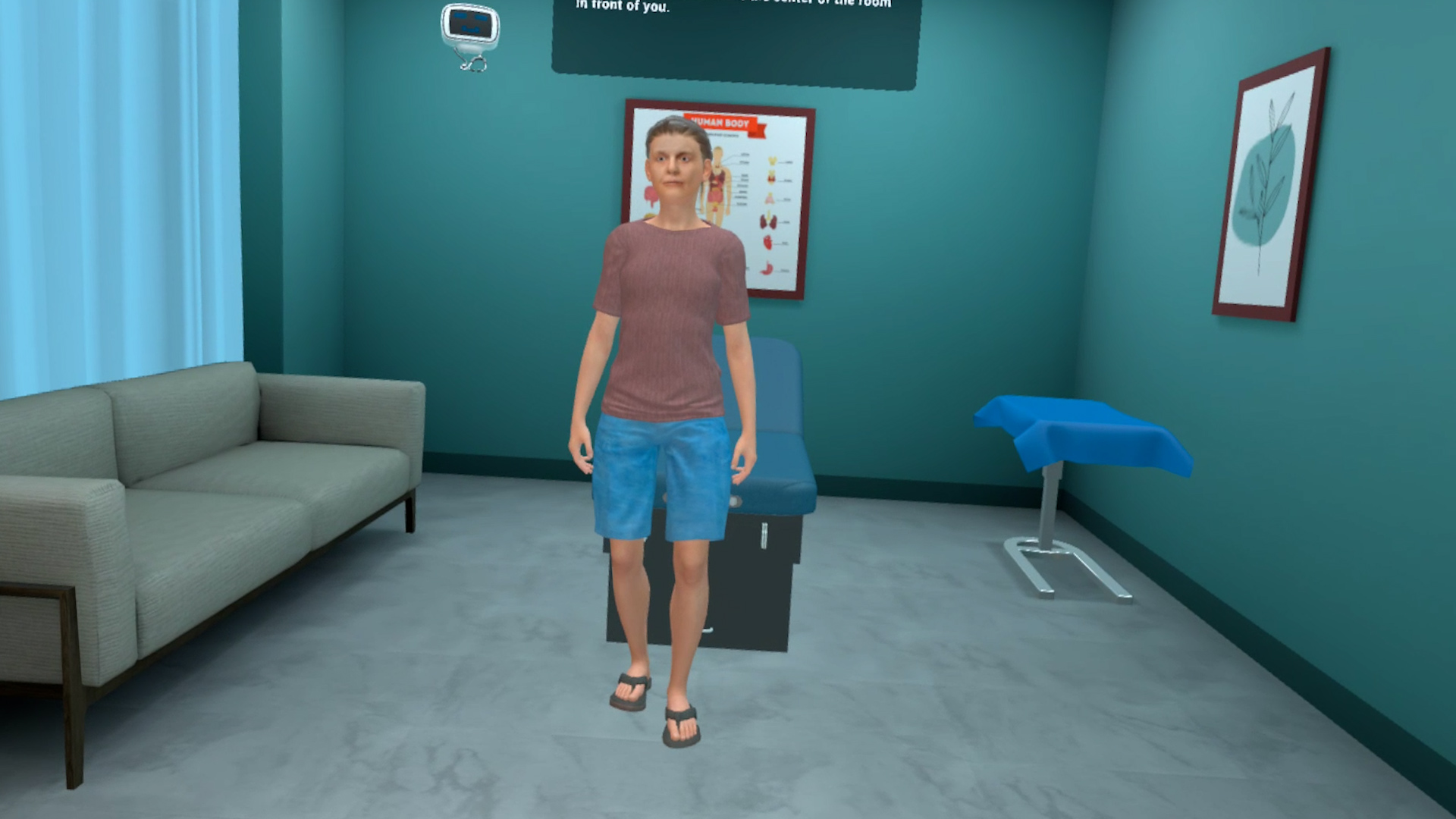Jaw and Shoulder Assessment
Seventy-year-old Susan Smith is undergoing a comprehensive musculoskeletal assessment. She had noticed a decline in her mobility and had been feeling slower than usual in her daily movements. Encouraged by her daughter, she is here for an examination. As part of the examination, Susan will undergo a thorough jaw and shoulder assessment to assess her condition and identify potential underlying issues.
This VR simulation is designed to help practitioners practice jaw and shoulder examination in a virtual environment with a virtual patient. With both training and assessment modes, learners can perform the procedure and assess themselves on their performance.
- Assessing the temporomandibular joint (TMJ) for swelling, tenderness, and abnormal movement
- Evaluating jaw movement by observing the range of motion, crepitus, and clicking sounds
- Performing a comprehensive shoulder assessment by inspecting, palpating, and testing range of motion in multiple directions
- Identifying any movement abnormalities, asymmetry, or discomfort during jaw and shoulder mobility tests
- Identifying potential musculoskeletal impairments by analyzing movement patterns, asymmetry, and patient-reported symptoms
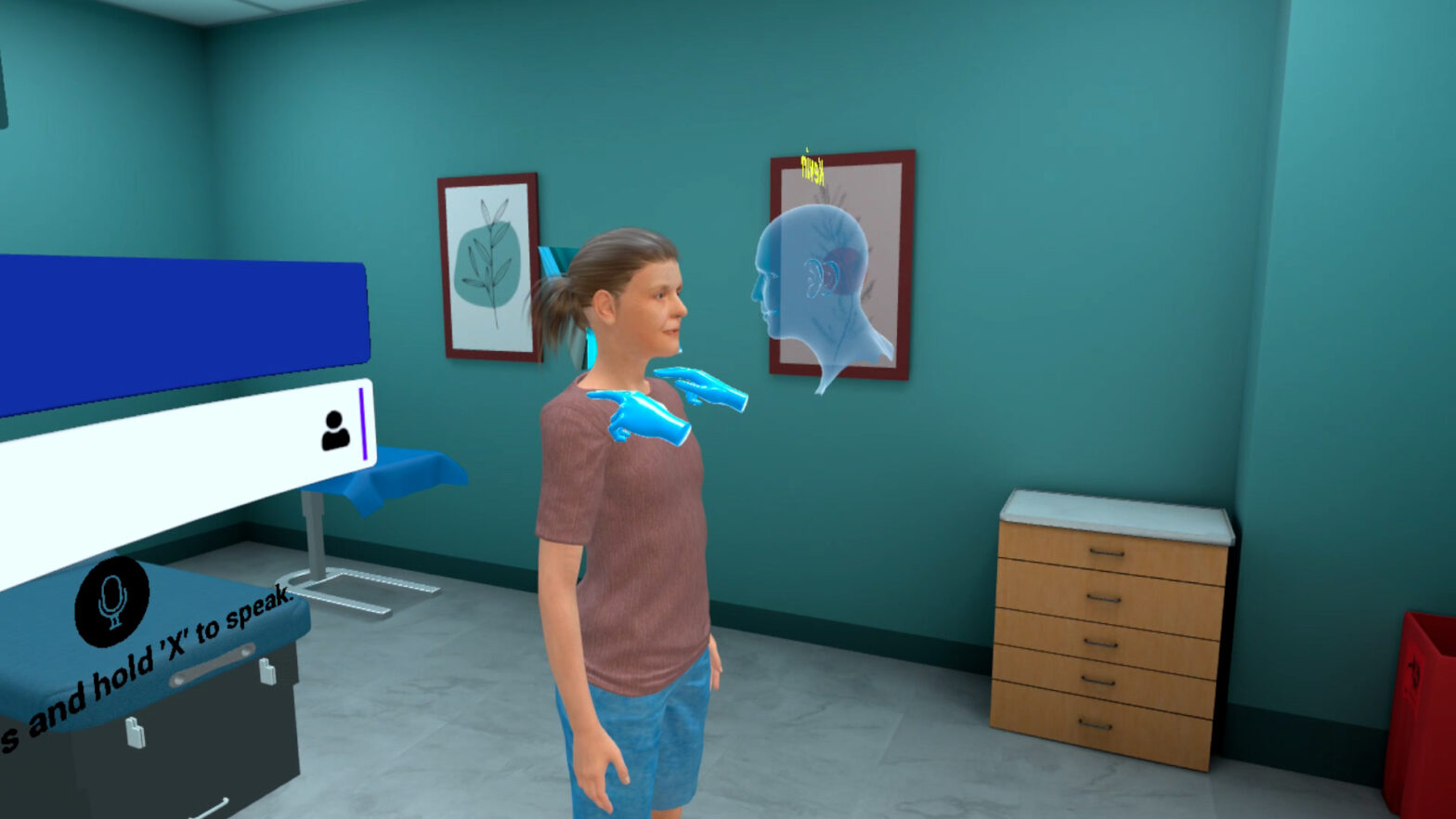
- Dutton, M. (2020). Dutton’s orthopedic examination, evaluation, and intervention (5th ed.). McGraw Hill.
Customize Your Program
Get rid of the editor. Adopt in-VR customization.
MedVR Education is bringing to you in-VR customization that will enable you to customize your procedural simulations by making selections from a range of feature choices.
- Select patient from a diverse background
- Choose preferred virtual environment
- Select equipment used in the procedure
- Modify difficulty level of the assessment mode
- …..many more to come
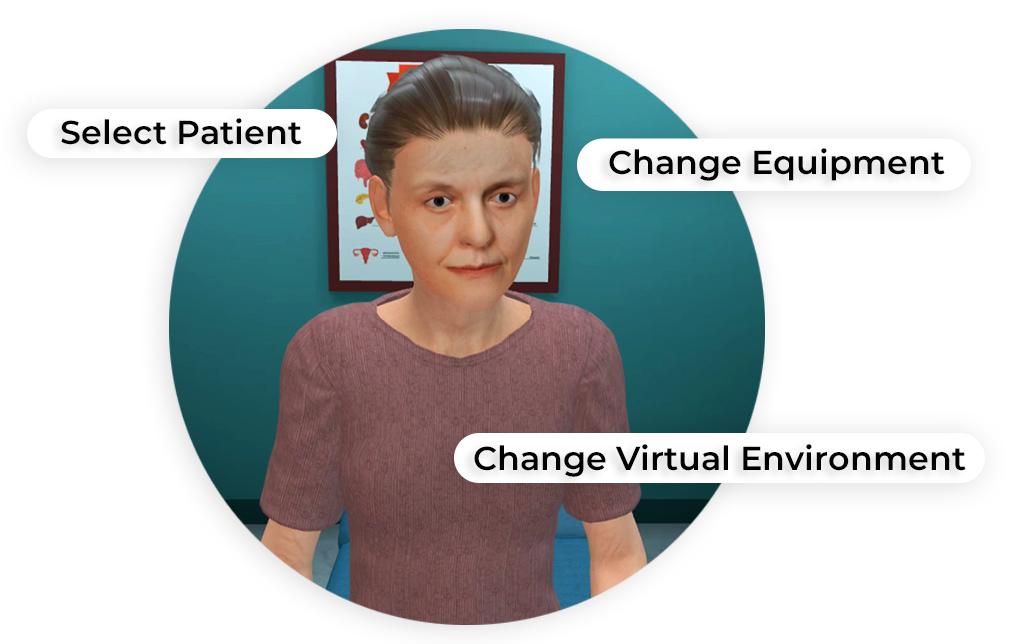
 Multi-playerSessions
Multi-playerSessions Physics-based Interactions
Physics-based Interactions
Core Skills Training
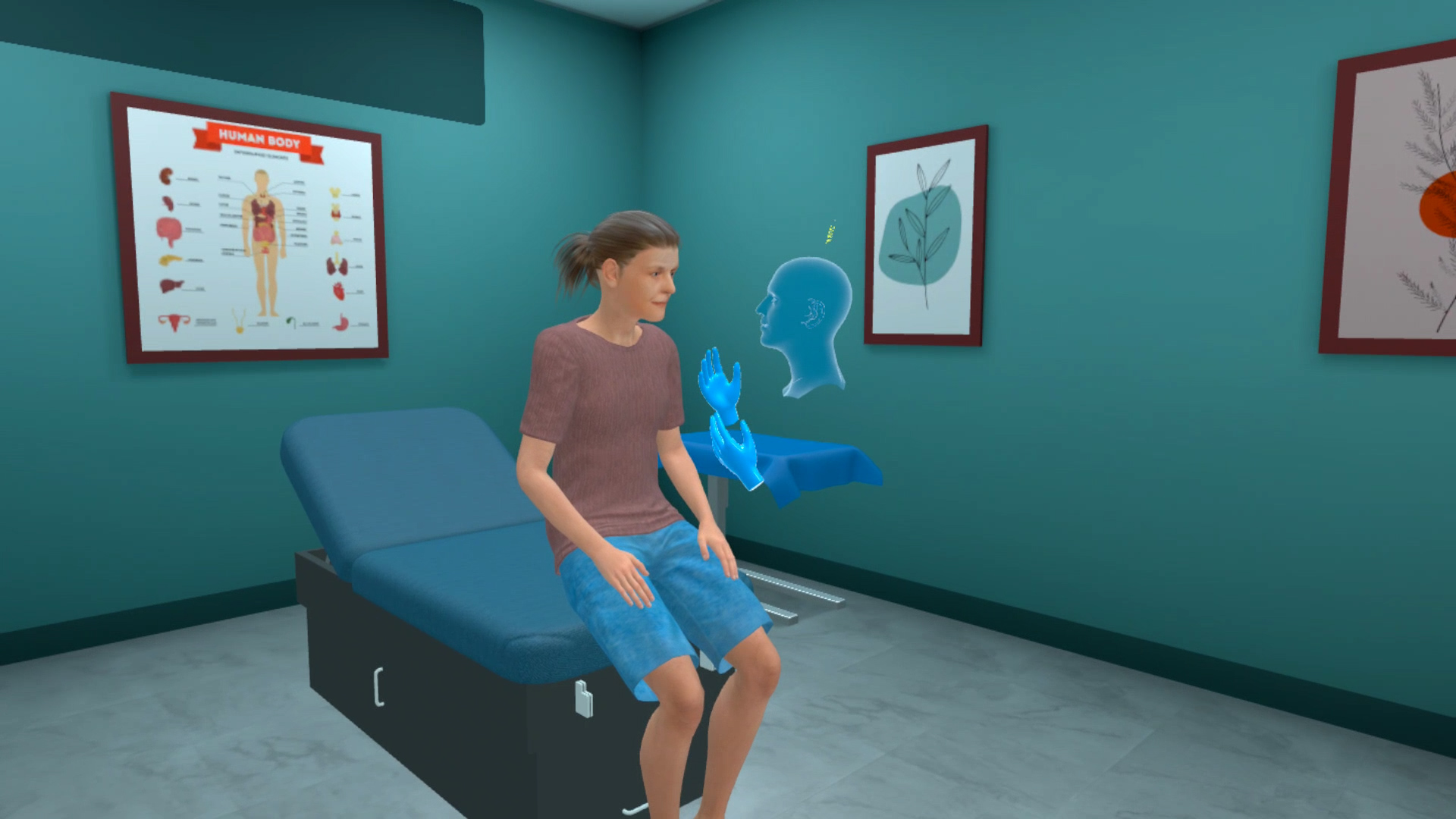
Performing Jaw and Shoulder Assessment
As a part of the Jaw and Shoulder Assessment, the learner will begin by confirming the patient’s identity, enquiring about any known allergies and learning about the reasons for the visit. Having collected some background information regarding past surgeries and ongoing medication they will palpate the TMJ, assess for tenderness and swelling, and observe jaw movements for any irregularities. For the shoulder assessment, learners will systematically evaluate both active and resisted movements, testing for smoothness, symmetry, and pain response. All necessary affordances are provided to complete the procedure with efficiency.
Training
With prompts, guidance and affordances learners are hand-held through the process to practice the procedure in a virtual environment with a virtual patient.
- Photorealistic virtual environment
- Physics-based interactions
- Detailed instructions
- Adequate affordances to assist in task completion
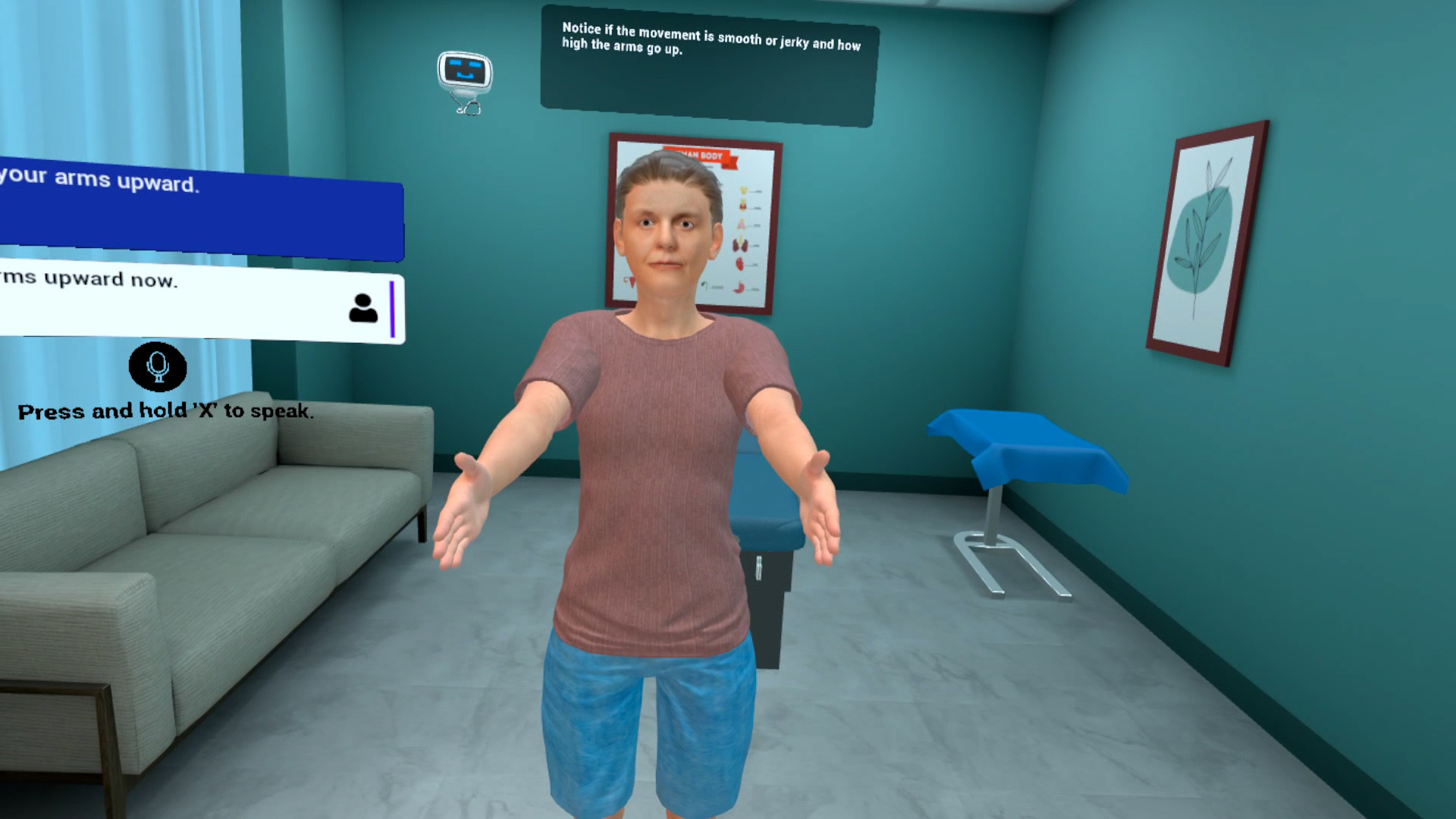
Assessment
Test acquired skills to perform the procedures from start to finish without prompts. An incorrect step will take the learner back to the start to start afresh.
- Live scoring
- Instant feedback
- Adequate affordances for efficient performance
- Time tracking to monitor activity completion
